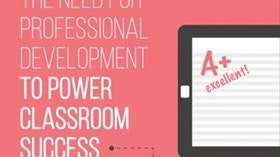Homepage
•
Learning Library
•
Blog
•
Empowering teachers to implement technology-driven educational programs
Expand breadcrumbs
Expand breadcrumbs
- Learning Library
- Blog
- Empowering teachers to implement technology-driven educational programs
- Homepage
- •
- Learning Library
- •
- Blog
- •
- Empowering teachers to implement technology-driven educational programs
Empowering teachers to implement technology-driven educational programs
By Jennifer Roland
October 7, 2015








